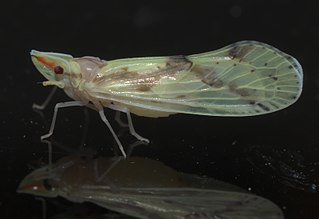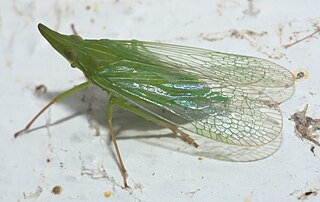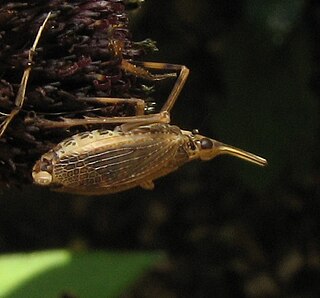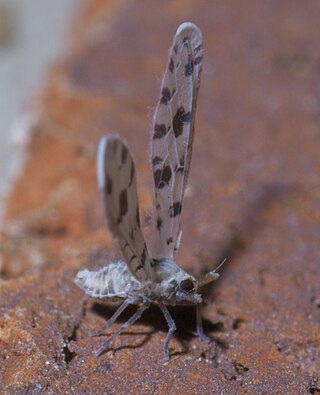
Haplaxius is a genus of cixiid planthoppers in the family Cixiidae. There are at least 60 described species in Haplaxius.

Flatormenis is a genus of flatid planthoppers in the family Flatidae from North and central America. There are about 15 described species in Flatormenis.

Melanoliarus is a genus of cixiid planthoppers in the family Cixiidae. There are at about 50 described species in Melanoliarus, which are common and widespread in the Nearctic and Neotropics.

Neocenchrea is a genus of derbid planthoppers in the family Derbidae. There are about five described species in Neocenchrea.

Oeclidius is a genus of kinnarid planthoppers in the family Kinnaridae. There are at least 20 described species in Oeclidius.

Opsiplanon is a genus of achilid planthoppers in the family Achilidae. There are at least three described species in Opsiplanon.
Hamba is a genus of achilid planthoppers in the family Achilidae. There are at least four described species in Hamba.
Mabira is a genus of achilid planthoppers in the family Achilidae. There are at least four described species in Mabira.
Myconus is a genus of achilid planthoppers in the family Achilidae and the type genus of the subfamily Myconinae and tribe Myconini; species have been recorded from South America and East Africa.

Ormenaria is a genus of flatid planthoppers in the family Flatidae. There are at least two described species in Ormenaria.

Otiocerus is a genus of derbid planthoppers in the family Derbidae. There are about 16 described species in Otiocerus.

Pintalia is a genus of cixiid planthoppers in the family Cixiidae. There are at least 50 described species in Pintalia.

Rhynchomitra is a genus of dictyopharid planthoppers in the family Dictyopharidae. There are about five described species in Rhynchomitra.

Scolops is a North American genus of dictyopharid planthoppers in the subfamily Dictyopharinae. There are over 30 described species in the genus Scolops.

Sikaiana is a genus of derbid planthoppers in the family Derbidae. There are about 17 described species in Sikaiana.

Thionia is a genus of planthoppers in the family Issidae. There are at least 60 described species in Thionia. However, several genera have been split off from Thionia reducing the number of species.
Osbornia is a genus of tropiduchid planthoppers in the family Tropiduchidae. There are at least two described species in Osbornia.
Pentagramma is a genus of delphacid planthoppers in the family Delphacidae. There are about nine described species in Pentagramma.

Cenchreini is a tribe of derbid planthoppers in the family Derbidae. There are at least 30 genera in Cenchreini.

Derbinae is a subfamily of derbid planthoppers in the family Derbidae.














